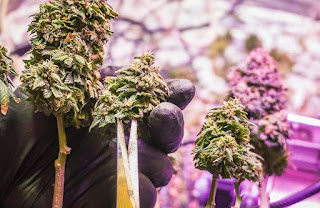The Evolution of Weed Dispensaries
In the past few decades, the landscape of cannabis consumption has undergone a remarkable transformation. What was once a clandestine activity has now emerged as a legitimate and booming industry. The rise of weed dispensaries, also known as cannabis dispensaries or pot shops, has played a pivotal role in this transformation. In this blog post, we'll explore the fascinating journey of weed dispensaries from underground operations to mainstream establishments.
1. The Underground Era
Before the legalization of cannabis for medical and recreational use in various states and countries, the sale and distribution of marijuana were largely clandestine activities. Cannabis enthusiasts had limited access to the plant and often relied on illegal sources to procure it. The underground market flourished, driven by the demand for a substance that many believed had therapeutic and recreational benefits.
2. The Catalyst: Medical Marijuana Legalization
The turning point in the evolution of weed dispensaries was the legalization of medical marijuana in certain U.S. states, beginning with California in 1996. This marked the first step towards legitimizing cannabis as a medicinal option for patients suffering from a range of conditions, including chronic pain, epilepsy, and cancer.
Under these new laws, licensed dispensaries could legally provide medical cannabis to patients who had been issued a doctor's recommendation. These dispensaries adhered to strict regulations, including product quality standards and patient verification processes.
3. The Dawn of Recreational Marijuana
The next significant milestone came with the legalization of recreational marijuana. Colorado and Washington became the first states to legalize recreational cannabis for adults in 2012. This move sparked a nationwide and, eventually, a global wave of changing attitudes towards marijuana.
As more states and countries followed suit, the cannabis industry began to shift from a purely medical focus to catering to the recreational market. Dispensaries expanded their product offerings to include a variety of cannabis strains, edibles, concentrates, and smoking accessories.
4. Dispensaries as Legitimate Businesses
With legalization came regulation and oversight. State and local governments established strict guidelines for the operation of weed dispensaries, covering everything from licensing and taxation to security and product testing. Dispensary owners had to navigate complex regulatory frameworks to operate legally.
This shift towards legitimacy led to the professionalization of the industry. Dispensaries adopted modern retail practices, including inventory management, employee training, and compliance with health and safety standards.
5. Dispensary Innovation
As the cannabis industry continued to evolve, so did the dispensaries themselves. Innovation became a driving force, with dispensaries focusing on enhancing the customer experience. Some key innovations include:
Online ordering and delivery services, providing convenience to customers.
Boutique dispensaries with a focus on product quality and education.
Cannabis lounges and consumption lounges in some regions, allowing on-site consumption in a social setting.
6. Community Engagement and Education
Many dispensaries prioritize community engagement and education. They host events, seminars, and workshops to educate the public about responsible cannabis use, the potential benefits of specific strains, and the importance of dosage control. This proactive approach helps destigmatize cannabis and fosters positive relationships with the community.
7. The Road Ahead
The journey of weed dispensaries from underground operations to mainstream businesses has been marked by tremendous growth and change. As more states and countries continue to explore cannabis legalization, the industry is expected to expand further.
Dispensaries will likely face new challenges, including increased competition and evolving regulations. However, their role in providing safe and regulated access to cannabis products is now firmly established, contributing to the ongoing transformation of the cannabis landscape.
In conclusion, the rise of weed dispensaries reflects the broader shift in societal attitudes towards cannabis. What was once an underground industry has become a legitimate, highly regulated, and continually evolving sector. As the cannabis industry continues to flourish, dispensaries will remain at the forefront, providing consumers with access to a wide range of cannabis products while adhering to the ever-changing legal landscape.



Comments
Post a Comment